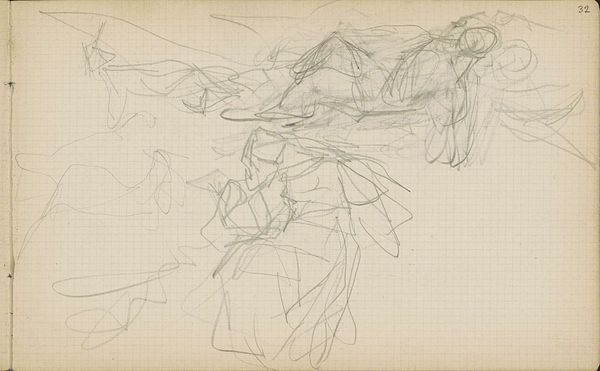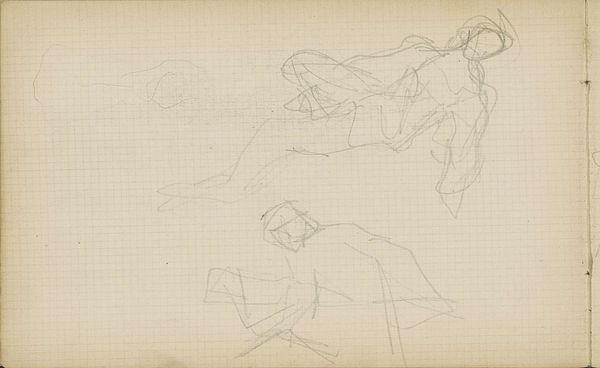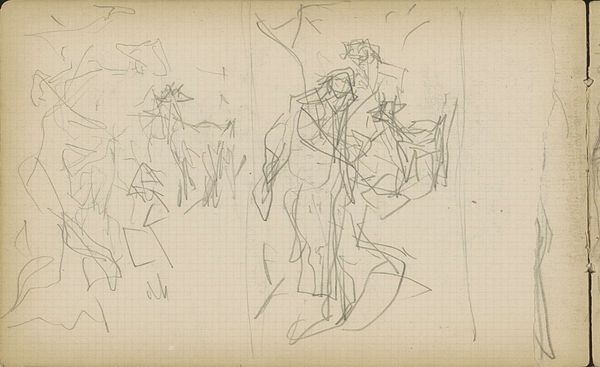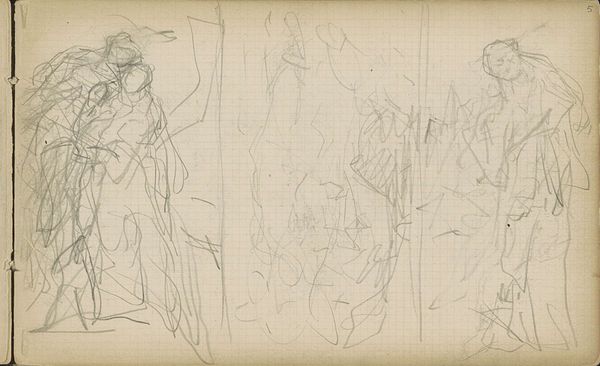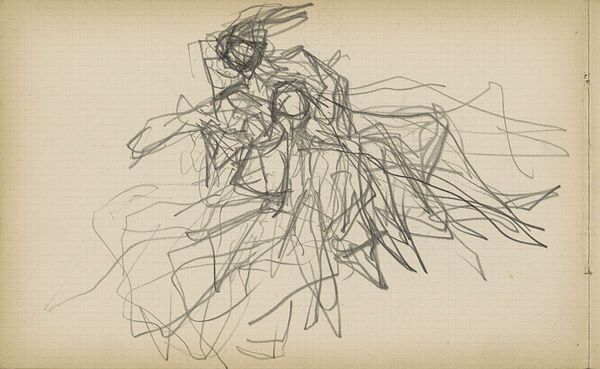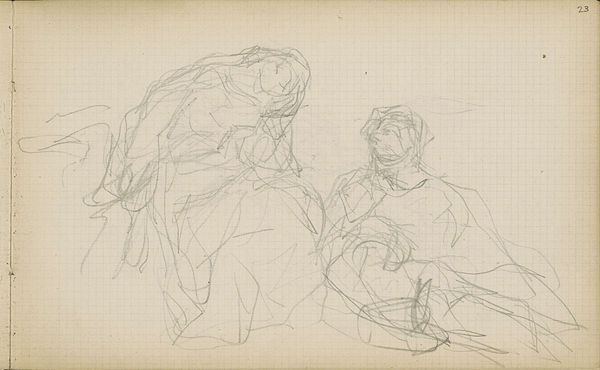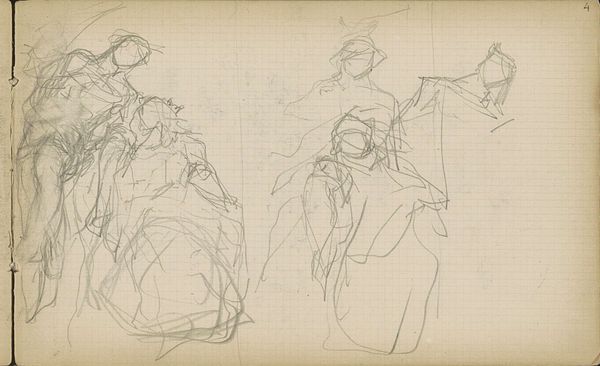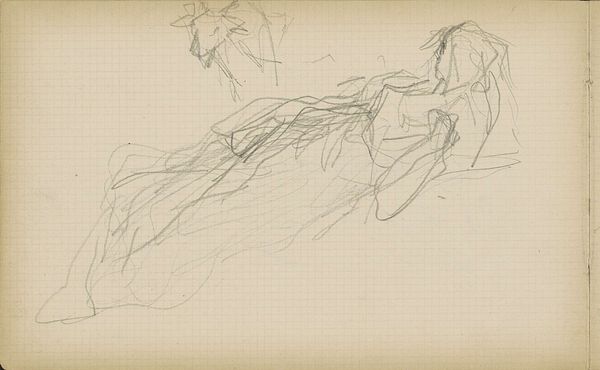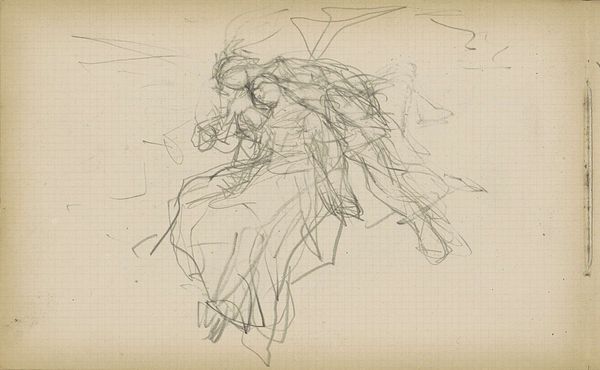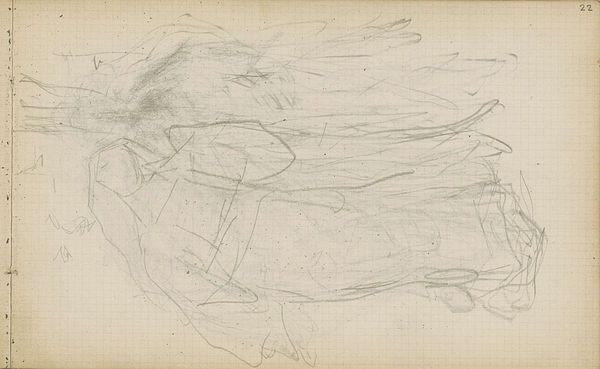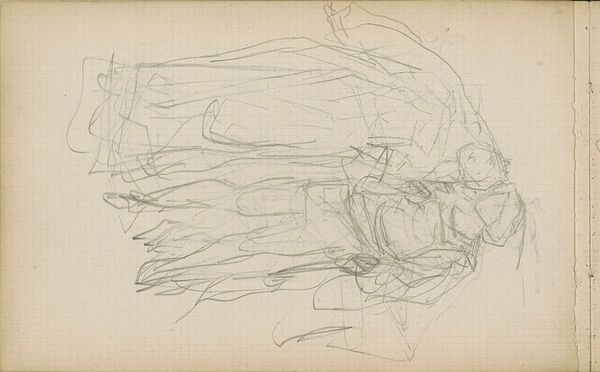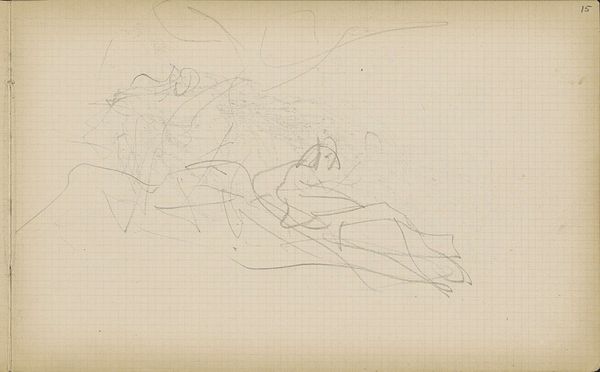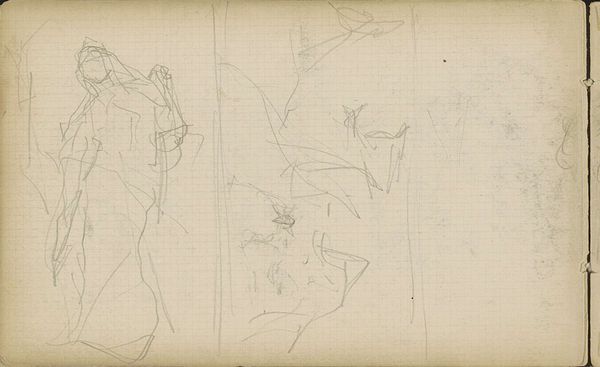
drawing, paper, pencil
portrait
drawing
impressionism
pencil sketch
figuration
paper
pencil
symbolism
Copyright: Rijks Museum: Open Domain
Editor: Here we have Matthijs Maris's "Vrouwen, de hoofden naar rechts gebogen," dating from between 1849 and 1917. It's a pencil drawing on paper, currently held at the Rijksmuseum. The lines are so faint, it almost feels like the figures are dissolving into the page. How do you interpret this work? Curator: What strikes me is the sense of collective identity being explored, even in this fragmented form. Maris, working within a late-19th century context, might be seen to subtly question the traditional, often idealized portrayals of women. Instead of individualised beauty, we see a suggestion of shared experience. Editor: Shared experience, how so? Curator: Consider the bowed heads. Is it submission? Perhaps, but also, perhaps reflection, shared grief, or even silent resistance. It's critical to understand the patriarchal structures of the time, where women's voices were systematically suppressed. So, in this context, these almost ghostly figures challenge that system simply by existing. What do you make of the medium? Editor: Well, the pencil feels transient, like these are just fleeting impressions. Curator: Exactly! It invites us to consider how women have been historically represented – or, indeed, erased – in art. Are these women fading away or refusing to be clearly defined by the dominant male gaze? I wonder about Maris' intentions. Editor: That's given me a totally new perspective. I came in seeing just a sketch, but now I see a powerful commentary on representation and identity. Curator: Precisely. And that's how art continues to speak across time, prompting us to engage with both its beauty and its socio-political significance.
Comments
No comments
Be the first to comment and join the conversation on the ultimate creative platform.
